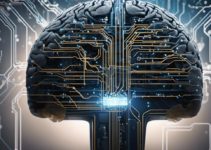What is the role of innovation in furthering education and vice versa? Are you familiar with technological innovations in education for 21st century teachers? The author reflects on current technological development and how this influenced teachers can upgrade the students’ acquisition of knowledge and outcomes arising through the application of technological innovations.
The society we are in at present is a product of evolved responses made by man through years of history. Human society, as we know it, originally comprised a few people interacting with each other and its environment primarily to meet their basic needs for survival.
From the mere preoccupation with activities to satisfy a hungry stomach as in the early hunting and gathering stage where humans live a nomadic life, man progressed toward achieving self-sufficiency with lesser effort.
Agricultural production with the aid of technology developed into a complex system as it is now. Crude, human-powered technologies advanced into mechanized or automated modes, thus increasing production to such levels to supply an increasing demand brought by a growing human population.
What caused these changes?
If we look closely, the primary motivation to achieve such changes comes from within the individuals that compose society. The desire to improve one’s plight spurs creativity. An idea to resolve a problem situation can motivate individuals to undertake significant steps to do better than the status quo. These new ideas that get something done are what we usually call INNOVATIONS.
Innovations can change lives.
Innovations in Education and Societal Development
Innovations could change the direction the society takes. Innovations are shaped by stored knowledge provided by education or experience. Societal development is made possible through innovations in education that originate from creative intellectuals in the academe, not only the faculty members but also many students who can cultivate their talents with the aid of education.
It is a known fact that education plays a great role in society’s development. In recent times, this has become very vital considering the fast pace of change accorded by the deluge of information provided by technology that connects thoughts from all over the world using computers.
We cannot discount the fact that information technology has influenced the way people build societies. It is now possible to gain and exchange information in almost all corners of the world; even those areas that were previously thought to be isolated, like Nauru and Kiribati.
According to Google Analytics, this website can reach these two isolated places albeit with very few traffic: 2 for Nauru and 13 for Kiribati in one year. But imagine how technology could reach these places known to belong to the 10 of the world’s most isolated places.
Schools, therefore, should not ignore this and subscribe itself to keep pace with changing times. Soon, physical presence may no longer be required in the exchange of information between mentor and students. Schools no longer monopolize the dissemination of knowledge. Knowledge pervades all nooks and crannies of any country through internet or information technology.

It is for this reason that serious attention must be given by schools, as a primary agent of change in society, to the quality of education imparted to the masses.
The societal development path pursued by current education appears to be towards man’s undoing. The more our society progresses, the more problems crop up that undermine this progress. New technologies bring with it externalities that undermine the technological advances made.
Satisfying wants and achieving conveniences in living cause pollution, not only on the physical dimension but also on people’s values in life or morality. Almost always, increased crime rate is equated with development or urbanization.
Finally, as an empowering resource for individuals, knowledge through education should be provided in such a way that no area of human life is left unfulfilled. Focus must be on the individual’s, and thus, the society’s total development. The goal is still there—to ensure human survival.
Technological Advances that Can Fuel Innovations in Education
Disruptive technologies during the past two decades have significantly changed the way of life of people.
Most of the economic development we have seen in the past years can be attributed to technological advances that pervade the life of the modern society—the Anthropocene—when human activity has caused significant changes in the earth’s climate and ecosystems. Although unofficially recognized as a geological epoch, many of the scientific literature cite the current time we are in using this buzzword.
The changes imposed by technological advances affect many sectors of society. For instance, the recent COVID-19 outbreak led to vaccines that use mRNA to confer immunity to individuals. The approach changed the traditional way of making vaccines using weakened viruses.
Specifically, for the education sector which this article focuses on, the following innovative educational advances have come to the fore.
Integrating Five Innovative Technological Advances in Education
1. Artificial Intelligence
I use artificial intelligence, or AI in drafting and editing articles on this website. I started off with subscriptions in Grammarly, then ProWritingAid that aids me in spotting appropriate words and grammatical structures, enhancing text readability.
The articles written on this website serves as resource materials in teaching the various subjects that I handle in the graduate school. Having published those articles online, I can integrate the articles as readings or reference materials in the modular learning mode of learning that we were forced to adopt because of COVID-19.
I tried Speechelo, another AI product that converts text to speech, in creating instructional videos not only to enrich the instructional modules but also to present synthesis the workshop outputs on curriculum development.
Machine learning, using mathematical models based on big data, has helped computers learn without directly getting instruction from humans. It is an application of AI that enables computer systems to learn on its own based on what it “sees.”
2. Virtual Reality
Experiential learning through virtual reality is now being pursued by well known technological companies of the world. Students can interact with their surroundings in a three-dimensional environment without leaving their homes.
Although the technology is in its infancy as the reality portrayed in the virtual world is not as vivid as it is in the real world, it has a lot of potential. Teachers just have to provide the guidance on how to optimize the learner’s experience as there is a tendency to use it for purely entertainment purposes.
The following video gives a walkthrough of virtual reality and how it can be used to enhance education.
3. Cloud Storage for Zoom Videos and Lessons
Many of my students have trouble accessing the internet at appointed times of virtual or online classes. I figured out that one way to help them keep up with the lessons would be to upload the recorded sessions each time.
Being familiar with the services offered by inexpensive cloud storage facilities like mediafire, I uploaded the recorded zoom recordings right after classes. I have to upgrade my subscription as I exceed the minimum 10 gigabytes of free storage provided by the cloud storage facility.
This approach somehow worked, as most of my students could access the recorded sessions. I could see they did because the cloud storage facility counts the number of downloads of each file I upload.
Many students find the scheme quite helpful to them. They no longer have the lame excuse of not submitting the required outputs in their subjects. I can also access the stored files in any of my gadgets; be it a desktop, laptop, or mobile phone.
4. Social Media
Although I find social media like Facebook and its integrated messaging app Messenger time consuming, it is a very effective medium to communicate with the students. They message me each time they have difficulty connecting to Zoom or if they even have personal problems, mostly financial and health-related concerns, that impinge on their academic pursuits.
As one function of teachers is to encourage students to go on, the social media during the COVID-19 pandemic has become a very useful tool to prod them on in advancing their career. The social media site also allowed them to confer with each other and update everyone on what was happening in class.
Many have lost hope because of financial problems, but the university and their teachers have been most accommodating in these challenging times. They were given more leeway in submitting their outputs, and even changes in the grading system were made to compensate for the difficulty associated with confinement.
5. Learning Management Systems
As a website developer, I applied my knowledge and skills to host my learning management system. With the aid of tutorials found in articles and YouTube videos, plus my apparent gift to easily grasp concepts related to how computers work, I created a MOODLE site for graduate students.
I refer to my learning management system as Blended Website Learning Model, a combination of websites that work together to achieve the purpose of allowing access to instructional materials, even with simple mobile devices.
The MOODLE site is useful to me as I can streamline the rating process. I know that MOODLE loads with difficulty for students who have poor internet connections. Hence, the main purpose of the MOODLE site is for students who are ready to take their quizzes or long exams only. It automatically computes the scores of the students which I can download in MS Excel spreadsheets.
Summary
Innovations in education must adopt and improve on the technological advances that pervade human lives in the anthropocene. Foremost among these disruptive technologies include artificial intelligence, virtual reality, cloud storage, social media, and learning management systems.
Societal development powered by educational innovations that integrate information technology would help build an economy that crosses boundaries—uniting the world for a better life for everyone.
©2023 January 7 P. A. Regoniel
[cite]



